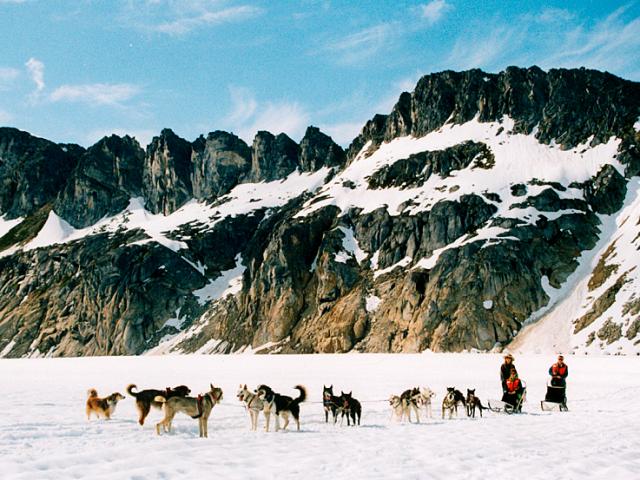There is no race so synonymous with Alaska as the Iditarod, and no sport as uniquely Alaskan as dog sledding. In fact, dog sledding is Alaska's official sport, a recreation tied to the state's adventurous history — and on an Alaskan cruise excursion, visitors can experience its thrill in Juneau or Skagway.
There is a lot to learn about dog sledding, whether training a team or preparing for a maiden sled ride. These five facts will bump your Alaskan status from a Lower 48 learner to a northern authority.
1. Stars of the Sled: The Yapping, Yelping Dog Team
Sled dogs know that when their master hooks them in, it's time to run — and their excited barking becomes contagious. But at the sound of their starting command, the dogs hush and take off.
2. Each Dog Has a Job
The musher carefully positions each dog in his team. The lead dogs, at the front, follow the musher's commands and set the team's pace. Swing dogs, who run behind the leads, help turn the sled and maintain pace. Team dogs are the horsepower, driving the sled forward and helping with turns. Closest to the sled are the wheel dogs, the strongest, to pull the heavy sleigh. The dogs work together in their respective places to make the sled fly across snow.
3. Dogs Wear Gear
Sled dogs don't wear hats and sunglasses, but they do wear booties on their feet to protect them from ice and snow. The best mushers practice putting their dogs in booties again and again. For racing mushers, the faster the better. Dallas Seavey, two-time Iditarod winner, aims to put each of his dogs in booties within 20 seconds. Spending 20 seconds on each dog, rather than a minute, becomes a difference of three hours over the course of the Iditarod. That can change whether a team places first or falls behind.
4. There's More Than "Mush!"
A command used by mushers to make a dog team run, "mush" is probably the most well-known of the sport's terms, but mushers might also shout "hike" to initiate a team. "Line out" tells the lead dog to pull the dogs straight out from the sled, so they can be hooked or unhooked. "Gee" means turn right, and "haw" is turn left. "Come gee" and "come haw" mean to turn around fully in either direction. How do mushers stop their teams? They shout, "Whoa!" and apply plenty of pressure on the sled's brake.
5. Dog Sleds Can Reach Speeds up to 20 MPH
On race day, typically between four and 10 dogs pull the sled. However, for certain races (such as the Iditarod) up to 16 dogs can be used. Incredibly, a team of 6 to 8 dogs can pull the sled and musher up to speeds around 20 miles per hour. With a team of 16 dogs, the challenging 1,100 mile Iditarod can take from eight days to up to a month to complete.
Ready to plan your dog sledding excursion? Discover the Alaskan cruise that's perfect for you.
